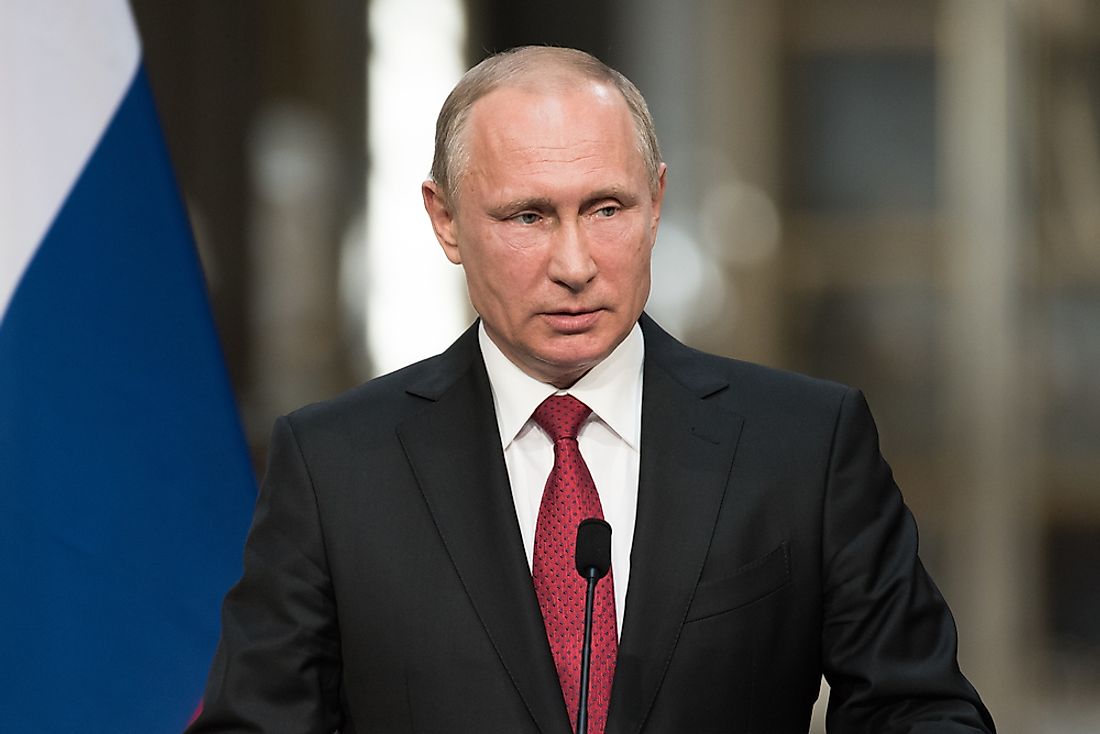Presidents Of Russia Since The Fall Of The Soviet Union

Russia has a semi-presidential government where the president and the prime minister share governing responsibility. The current president of Russia is Vladimir Putin. Below is a list of presidents that have served the country since the Soviet Union was dissolved.
Boris Yeltsin: 1991 - 1999
Boris Yeltsin was the first president of Russia after the fall of the Soviet Union. He was born on February 1st, 1931 in Butka Village in Yekaterinburg, also known as Sverdlovsk Oblast, to a peasant family. Yeltsin’s first step into Soviet politics began in 1968 when he joined and became active in the party. In 1976, he was appointed the first secretary of the Sverdlovsk District Central Committee, a role similar to a Governor in the US. Yeltsin’s work in the district garnered him a reformers reputation. His prominence in Soviet politics rose further in 1985 after Mikhail Gorbachev, then Soviet Leader, brought him to Moscow to be the Communist Party secretary. In 1987-1988, Yeltsin clashed with and criticized Gorbachev over the pace of reforms. As a result, he was stripped of the Communist Party secretary post.
For a while Yeltsin became a political pariah. But in 1989 he made a political comeback winning by 90 percent vote margin, gaining him a seat at the newly formed Soviet parliament. In 1990, he denounced the Communist Party. His political momentum built up to 1991 as he criticized Gorbachev, who was losing the support of the masses. He won that year’s presidential election to be president of Russia. On December 25th 1991, Gorbachev resigned and six days later the Soviet Union was dissolved. On 31st December 1999, Yeltsin abruptly resigned and handed power to Vladimir Putin, his chosen successor. He later died on April 23, 2007.
Vladimir Putin: 2000-2008, 2012-Present
Vladimir Vladimirovich Putin, the current president of Russia, was born in Leningrad, today referred to as Saint Petersburg, Russia, on October 7th, 1952. Maria Ivanovna, a factory worker, and Vladimir Spiridonovich Putin, a World War 1 conscript, were his parents. Putin grew up in a communal apartment and went to a local grammar school. After high school, he enrolled to study law at Leningrad State University and after graduating in 1975, Putin began his career in the KGB spy agency, as an intelligence officer.
Later, Putin worked in the administration department at the University of Leningrad and became an adviser to Anatoly Sobchak, a liberal politician. When Sobchak became mayor, Putin became his deputy. After Sobchak's mayoral defeat in 1996, Putin moved to Moscow. In Moscow, he was appointed deputy head of management under Yeltsin’s administration. Putin was then appointed to head the KGB’s Federal Security Service. In August 1999, Yeltsin dismissed his premier Sergey Stepashin and his cabinet and made Putin prime minister.
After Yeltsin resigned in December 1999 he appointed Putin as acting president. When elections were held on March 2000, Putin won the presidency by 53 percent of the vote, and in 2004, he was re-elected. In 2008 due to constitutional term limits, Putin didn’t run in the elections. He was succeeded by his mentee Dmitry Medvedev as president, and Putin assumed the role of prime minister, continuing his influence on Russia. On March 4th 2012, Putin was re-elected to serve a third term as president amidst claims of rampant election fraud.
Dmitry Medvedev: 2008-2012
Dmitry Medvedev is a Russian politician who served as the country’s president from 2008 to 2012 and is currently the prime minister. Medvedev was born on the 14th of September, 1965 in Leningrad. In 1990, Medvedev, similar to Putin, worked under Mayor Anatoly Sobchak after completing his Ph.D. When Putin’s presidential term ended in 2008, due to term limits he handpicked Medvedev as his successor. He won the election by receiving around 70 percent of the vote. After Medvedev became president, he appointed Putin as prime minister and served as Russia’s president until 2012. In 2012, Medvedev became Russia’s prime minister, after Putin assumed the presidency.
When Medvedev became Russia’s president in 2008 and appointed Putin as prime minister, many critics in the country and outsiders alike viewed him as a puppet government of Putin. But after assuming presidency Medvedev had better relations with the west on such important issues as nuclear defense agreements. In April of 2010, he signed new nuclear arms treaty (START), aimed at cutting nuclear warheads in each country to 1550. In 2008, he recognized the independence of two breakaway regions of Georgia, the South Ossetia and Abkhazia provinces. As president, Russia joined the World Trade Organization. While his policies seemed liberal, many western critics viewed them as empty rhetoric as he was unable to implement them, due to Putin’s strong hand.
Presidents Of Russia Since The Fall Of The Soviet Union
| Rank | President of the Russian Federation | Term(s) in Office |
|---|---|---|
| 1 | Boris Yeltsin | July 10th, 1991 to December 31st, 1999 |
| 2 | Vladimir Putin | May 7th, 2000 to May 7th, 2008; May 7th, 2012 to Present |
| 3 | Dmitry Medvedev | May 7th, 2008 to May 7th, 2012 |











